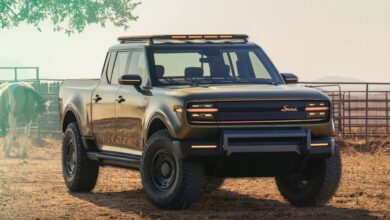General Motors Has Big Plans For Your Old EV Battery

- GM and Redwood Materials are teaming up to give old batteries a new life.
- Under the new agreement between the two companies, Redwood will help recycle GM-supplied battery packs into energy storage devices.
- This provides scalable, cost-effective energy storage while also reducing waste produced by old or totaled EVs.
Ever wonder what happens to an EV battery pack when the car dies? I’d like to think it goes to battery heaven—after all, I hear dogs have their own version. But the reality is a bit more grim at the moment, with any number of possibilities from ending up in a landfill to being recycled into a slurry of processed minerals called a black mass. Thankfully, General Motors and Redwood Materials have a plan: give those cells a second life powering literally anything and everything else.

The duo announced a new partnership on Wednesday that would breathe new life into old EV batteries. Essentially, the pair would work together to feed Redwood a steady stream of “retired” battery packs for repurposing to keep EVs from becoming the next big contributor to the e-waste crisis.
You probably know GM already, but not everyone has heard of Redwood. For those who haven’t, you’ve probably at least heard of Tesla. JB Straubel, the CEO and founder of Redwood Materials, was former CTO of Tesla (and also its fifth ever employee). Straubel’s purpose in founding Redwood was to create a closed-loop in the battery supply chain, allowing automakers (and other companies that need energy storage) to utilize the critical materials that have already been harvested for their cars. Redwood launched Redwood Energy in June, which expands on the company’s original purpose in order to deploy EV battery packs—both new and recycled ones—into modules for low-cost energy storage systems.
GM might supply Redwood with a new battery pack, sure. But it’s also planning on dropping plenty of old packs on the company’s doorstep, too.
See, EV batteries could be retired for a number of reasons. They could have a bad cell, or maybe they’ve dipped below the optimal roadworthy range of 70-80% capacity. That isn’t to say that these batteries still don’t hold a ton of juice, so grinding them up into a coarse powder or dumping them in a junkyard is basically like throwing away cash.
Redwood also happens to have a network of sources to get these packs in addition to directly from GM. It might be sent to the company directly from a dealership as a recycled pack, or it could be reclaimed from an automotive dismantler. There’s also the complex web of national collection and logistic services that source these packs for Redwood since EVs all end their serviceable lives in different ways.

Photo by: InsideEVs
This partnership does two things that GM—and, let’s be real, the entire auto industry—needs right now:
First, it helps GM look eco-smart in front of all its peers and EV nay-sayers. Second, it helps deal with the impending tidal wave of first-generation EV batteries that will soon start coming back to automakers as tech improves and folks start turning in their old Chevy Bolts and Teslas for new BEVs with gobs of range.
And to really hammer home Redwood’s mission, many of these batteries will be able to be reused before they need to be recycled. In fact, batteries from GM’s partnership with Redwood are already powering a 63 megawatt-hour battery microgrid in Sparks, Nevada—that’s the largest microgrid in all of North America. It’s being used to support an AI infrastructure company helping to back OpenAI.
“Electricity demand is accelerating at an unprecedented pace, driven by AI and the rapid electrification of everything from transportation to industry,” said Straubel in GM’s press release. “Both GM’s second-life EV batteries and new batteries can be deployed in Redwood’s energy storage systems, delivering fast, flexible power solutions and strengthening America’s energy and manufacturing independence.”
When you think about it Redwood is really helping to create another domestic battery ecosystem that’s sustainable and less dependent on mining new minerals. That means less worry about how these materials were sourced and ensuring that they’re obtained ethically. It also gives the opportunity for cheaper products all around by reusing batteries before having to re-process them using energy-intensive hydrometallurgy and pyrometallurgy recycling methods.
So the next time that someone tells you that EVs are wasteful because the batteries just get thrown out, just smile and nod while imagining a big pile of GM-branded battery packs humming away in a substation somewhere preventing the grid collapse. Sometimes even the future is built from old parts.
Source link

